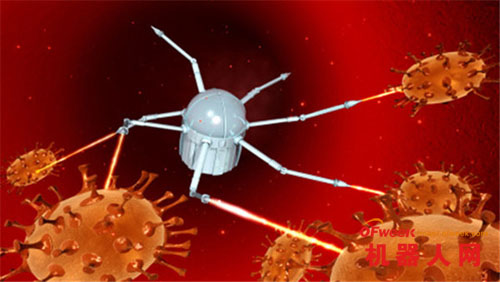The development of nano-robots belongs to the category of molecular bionics. It designs prototypes based on the biological principles at the molecular level, and designs and manufactures "functional molecular devices" that can operate on nano-spaces. The recent vision of nano-biology is at the nanoscale. Applying biological principles, discovering new phenomena, and developing programmable molecular robots, also known as nano-robots. Synthetic biology redesigns cell signaling and gene regulatory networks to develop "in vivo" or "wet" organisms Computer or cell robots have produced another way of nano-robot technology. Production is inseparable from the invention of SPM and its application in life sciences. The life process is the most complicated thing in the known physical and chemical processes. Unlike macrobiology, nanobiology looks at life phenomena from a microscopic perspective and targets molecular manipulation and modification. The development of nanobiology has not been long and has achieved gratifying results. Bioscientists have come up with many challenging new ideas in the field of nanobiology. Nanobiology processing techniques can learn from biological cells. The idea of ​​nanobiology is to apply biological principles at the nanoscale, discover new phenomena, and develop programmable molecular robots, also known as nanobots. The content involved can be summarized into the following three aspects: 1 Understand the fine structure of biological macromolecules and their relationship with function at the nanoscale. 2 Obtain life information on the nanometer scale, for example, using a scanning tunneling microscope to obtain structural information of the cell membrane and the cell surface. Development of 3 nano robots. Nano-robots are the most tempting content in nanobiology. The first generation of nano-robots is an organic combination of biological systems and mechanical systems. This nano-robot can be injected into human blood vessels for health checkups and disease treatment. It can also be used to repair human organs, perform cosmetic surgery, remove harmful DNA from genes, or install normal DNA in genes to keep the body running. The second generation of nano-robots is a nanoscale molecular device that is directly assembled from atoms or molecules into specific functions. The third-generation nano-robots will contain nano-computers, which are devices that can perform human-machine dialogue. You continue to have a fever, but the doctor does not prescribe or give you a shot, but instead provides a special medical treatment – implanting a tiny robot into the blood. The robot detects the cause of the fever, sways a pair of tail-like attachments, swims through the arteries and veins, runs to the appropriate system, and directly treats the affected area. It sounds like science fiction. But the good news is that this new robot may be used in practical medical procedures soon. Engineers around the world are working on designing this “nanobot†and ultimately treating everything from hemophilia to cancer. Buckwheat Tea,Organic Buckwheat Tea,Bitter Tartary Buckwheat Tea,Buckwheat Granules Huantai Biotechnology Co., Ltd. , https://www.huantaifds.com
Future in vivo nanomachine doctor
Next Article
*** Where is it like to buy food?
Prev Article
Fennel root rot